Sometimes it is hard to find the fabric you want in shops catering to private customers. It might be that you need a more durable fabric like a polyester stretch or, like in this example, a finer knit.
To sew this skirt you will need a sweater in fine knit. If you do not already have a sweater you want to use it might be worth a try to look at the ones in menswear. they also have the added benefit of coming in larger sizes, thus providing more fabric.
You will need the SKIRT pattern pieces available under the pattern section of our website. The sweater also need to be large enough to accommodate the pieces (try to buy/find as big as you can). Remember you have to add seam allowance at the seams between the pieces and top seam, and a slightly longer one for the hem (fig. 1).
Begin by removing the neck band, cuffs, waitband and sleeves. Then, cut open the body and sleeves of the sweater at the seams. Try to cut as close to the seams as possible so you spare as much fabric as you can (fig. 2, 3 and 4).
Lay out the pattern pieces on the fabric in the best way that fits the pieces. This is just an example but make sure you put the pattern pieces along the grain line Remember seam allowance. Pin and cut out the pieces.(fig. 5 and 6).
Sew the tucks.
Fold, pin and sew the tucks on the front piece of skirt. Remember to extend the line of stitching beyond the tuck. Overlock or zig-zag the raw edges. Press seams towards the outside (fig. 7a and 7b).
Fold, pin and sew the tucks on the side of back parts of the skirt. Remember to extend the line of stitching beyond the tuck. Overlock or zig-zag the raw edges. Press seams down (fig. 8).
Sew parts together
Pin and sew the back side pieces to the centre back piece. Overlock or zig-zag the raw edges. Press seams towards the outside (fig. 9).
Lay the skirt front onto the back piece with right sides facing each other. Pin and sew the edges. Overlock or zig-zag the raw edges. Press seams towards the back side (fig. 10 and 11).
Sew the waistband
Measure and cut the elastic according to your waist measurements (add a little extra for sewing together). Overlap the edges a few cm and sew the elastic into a loop. Zig-zag the edges (fig. 12).
Place the elastic over the outside of skirt at the waist and pin it evenly in place. Sew the elastic to the skirt about 1 cm in from the upper edge. Stretch out the elastic and skirt a little while you are sewing. Use zig-zag stitch as it stretches more easily (fig.13).
Press the elastic up so that it forms the waist band. fold the hem up 0,5 cm and press. Fold again 1,5 to 2 cm and press. Pin and sew the hem line. Skirt is complete (fig. 14 and 15).

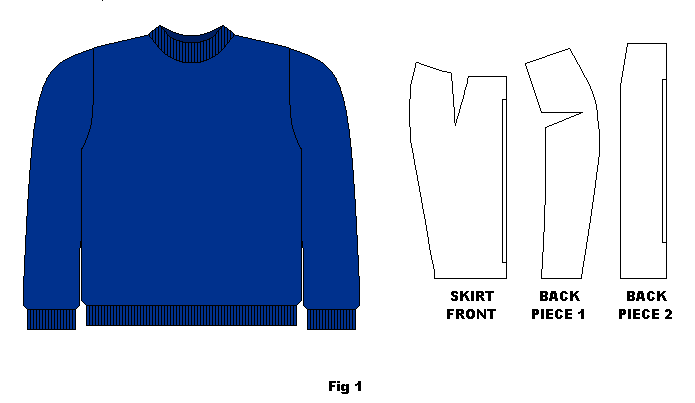
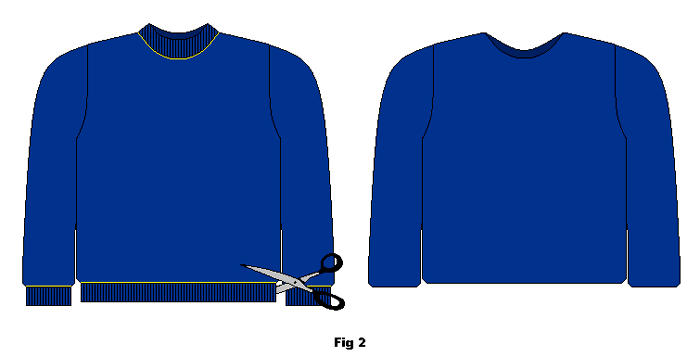

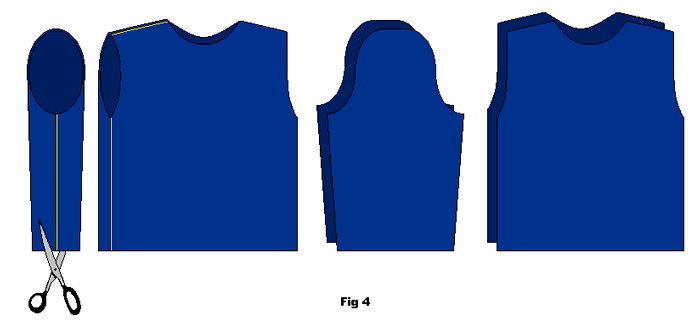
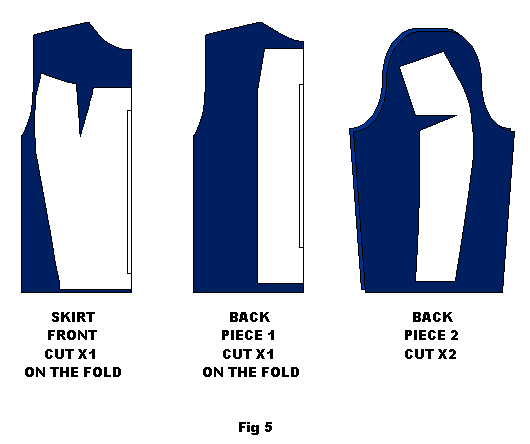

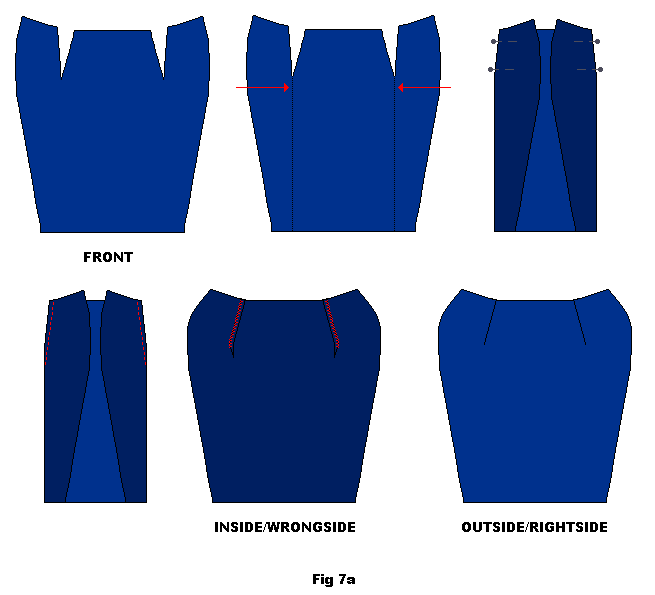
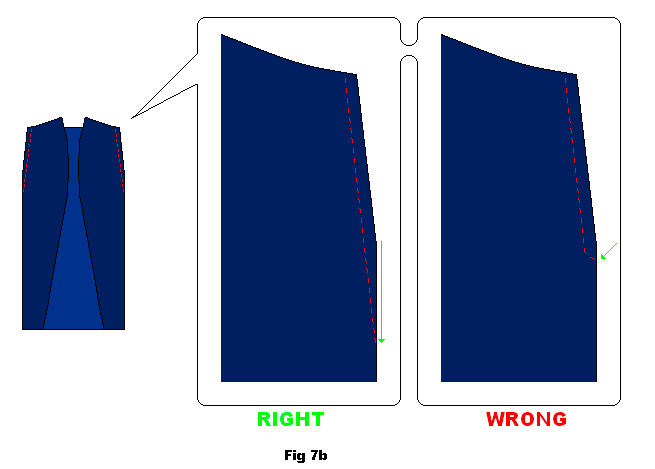
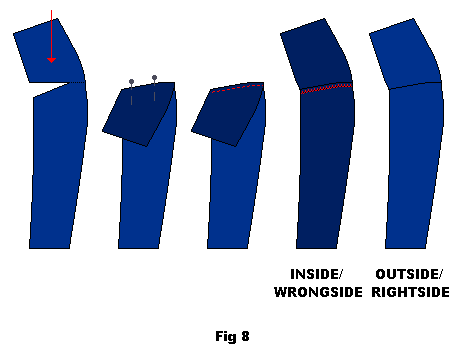
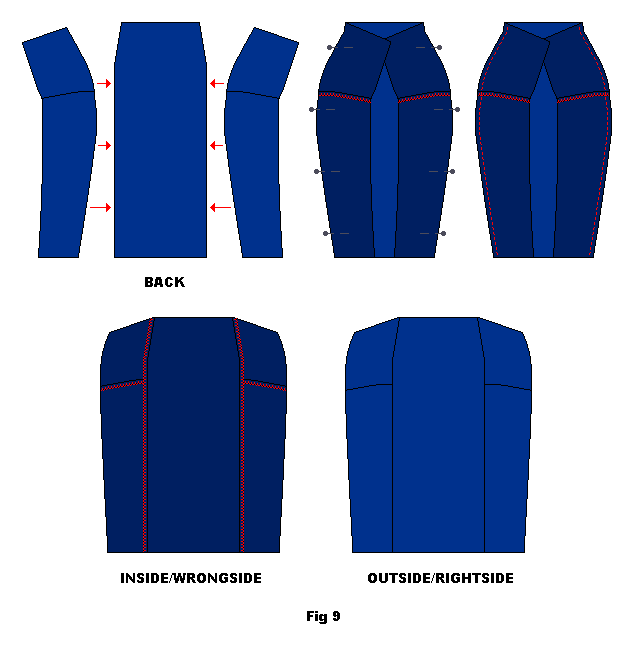
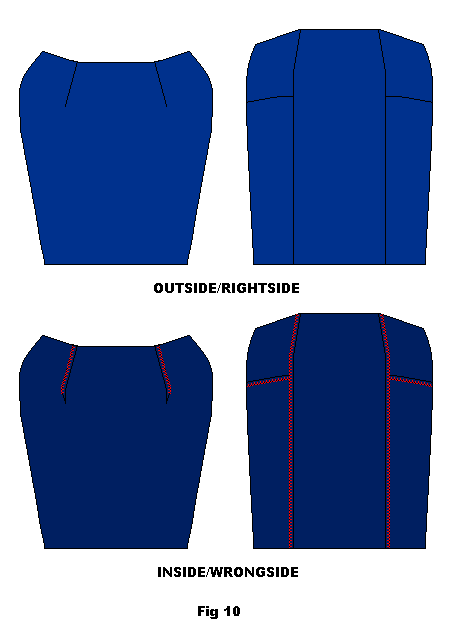
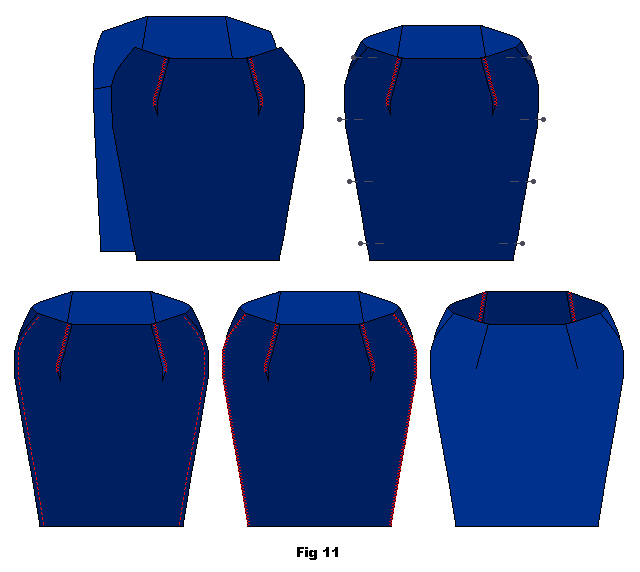
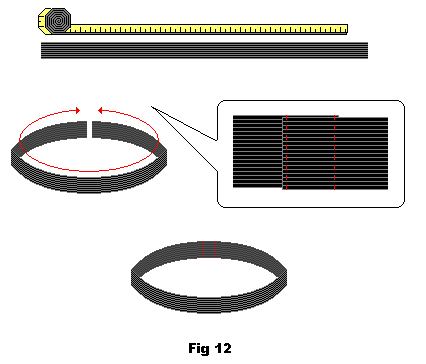
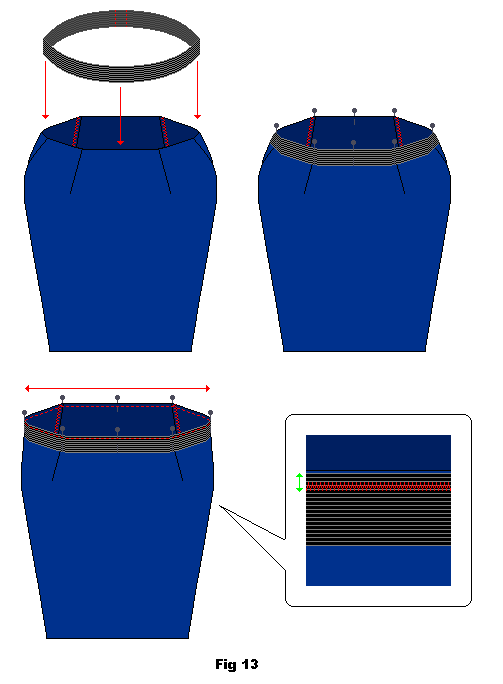
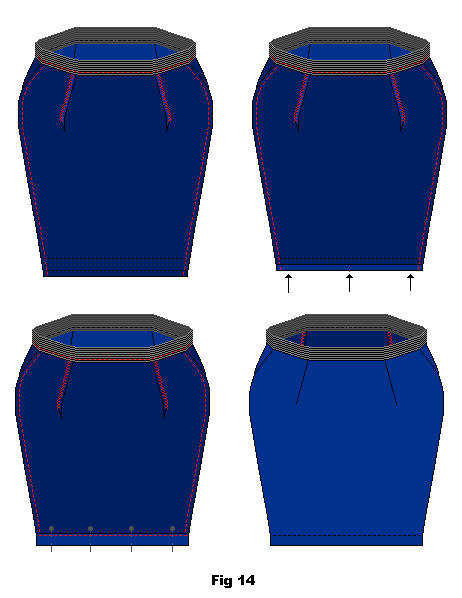
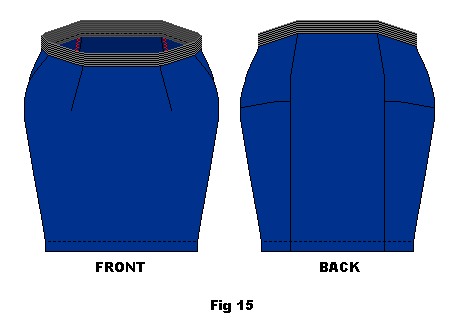
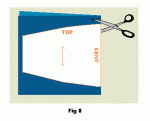
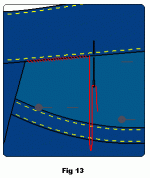





This is grew! Thank you! I have another question, on a sweater I want to keep, but is too small approximately one size, can I cut the side seams open and add fabric by sewing pieces in? I would probably sew the pieces into the underside of the sleeve as well. Does anyone know if this can be done?